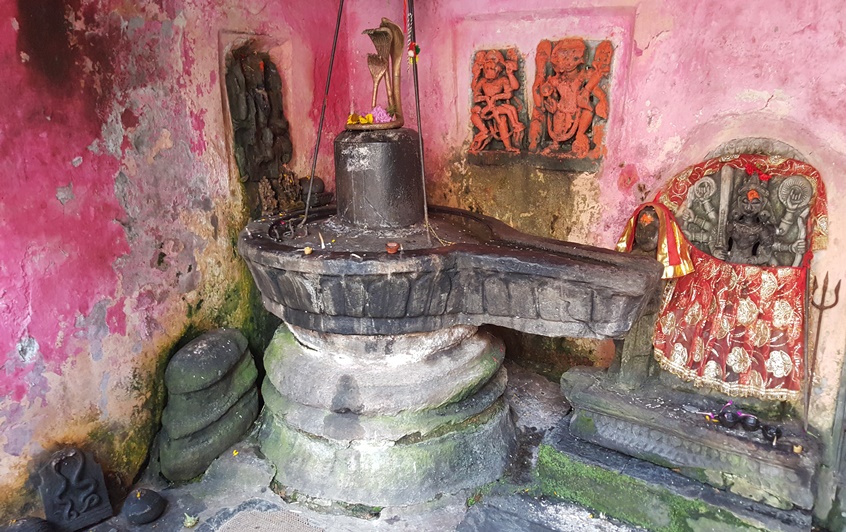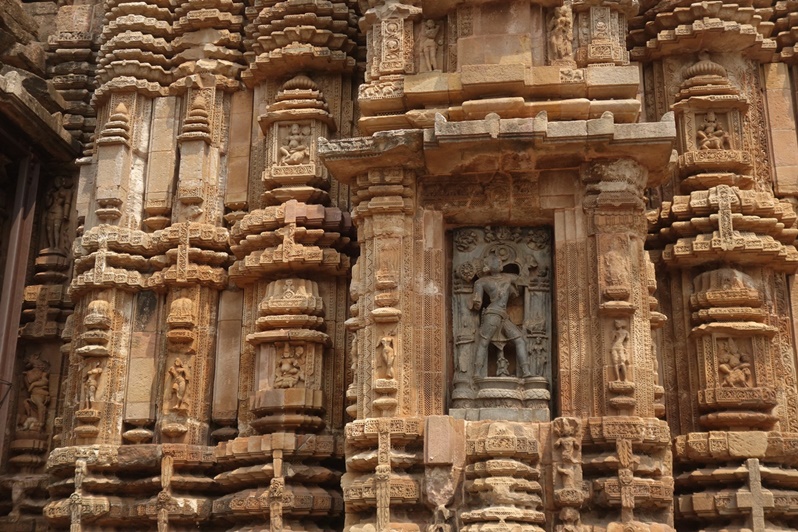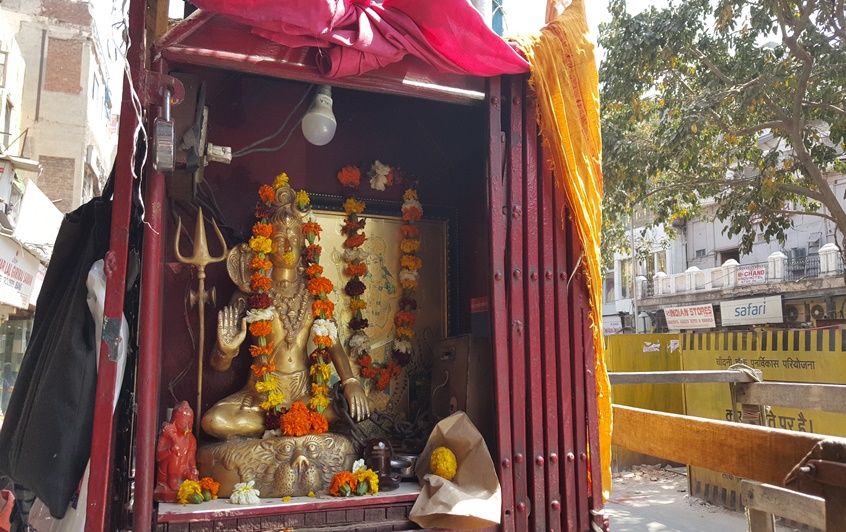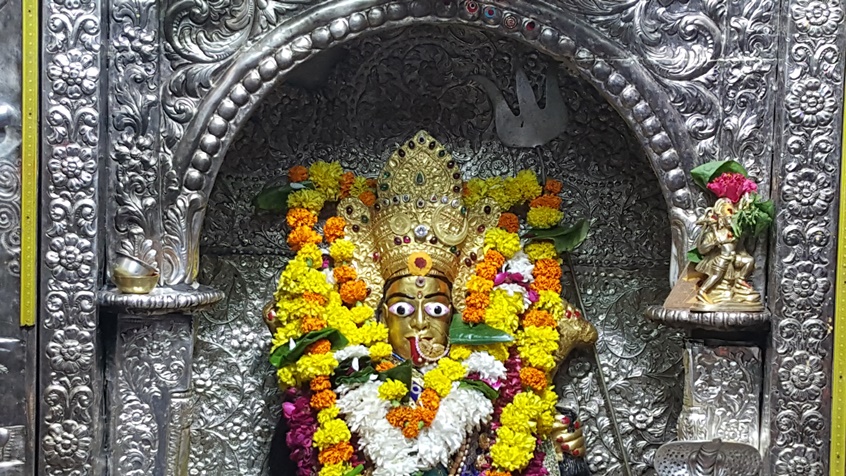
par Bertrand Bellaize, le 30 décembre 2020
Hindouisme - divinité hindoue : la Trimurti – Shiva
La Trimurti est le socle de l’enseignement spirituel hindou qui permet d’expliciter le monde manifesté dans laquelle nous évoluons : Brahma représente le principe créateur, Vishnou, le préservateur et Shiva le destructeur qui permet le renouvellement. Ces trois forces sont indissociables, complémentaires et opposées.
Le Pudma Purana relate que pour conserver le monde qu’il avait crée, Brahma tira de son flanc droit Vishnou et pour pouvoir le détruire, il sortit de son flanc gauche Shiva.
Shiva est une divinité complexe, riche en enseignement, en symboles : elle est ambivalente. Shiva est à la fois terrifiant et bénéfique : il incarne la destruction qui permet la régénération, qui permet la libération (moksha) : libération de l’identification aux formes, à l'ego, à l'attachement au passé - à ses conditionnements qui nous empêche de retrouver notre nature primordiale, la pure conscience - l'atman.
Il représente donc l’union des opposés : manifesté/ non manifesté - masculin/féminin - noirceur/lumière..... Il est souvent décrit par un qualificatif suivi de son opposé : pur/impur, chaud/froid, paisible/violent, amant/ascète … car il incarne la manifestation dans sa globalité et les moyens de s’en affranchir. Il est au-delà des paires d’opposés.
Shiva, le seigneur du sommeil
Fondamentalement Shiva représente l’Absolu, le Soi, la nature primordiale de chacun d’entre nous : il nous rappelle l’état qui précède la manifestation. Le seigneur du sommeil est celui qui permet à la conscience de prendre forme : il faut entendre le sommeil dans le sens du sommeil profond, celui sans rêves, ou l’être cesse de s’identifier à son corps (ainsi qu’à ses émotions et pensées) et retrouve sa nature fondamentale.
A un niveau plus métaphysique, ce sommeil est donc à comprendre comme l’état qui précède l’incarnation dans une forme, c’est donc un état heureux : retrouver cet état est le but de toute Sadhâna ou chemin spirituel, c’est la libération, l’éveil, la fin de l’attachement (dans le sens du lien).
Brahma incarne la force ou le Gunas Rajas (création-expansion), Vishnou, Sattva, l’équilibre, la cohésion et Shiva représente Tamas, la désintégration, l’obscurité, l’inertie : ces trois formes de l’énergie sont toujours à l’oeuvre ensemble, elles sont indissociables. Une forme (un être vivant, tout comme une montagne, un nuage, un monument….) naît, se développe, croît, se déploie atteint sa plénitude puis commence à vieillir, à décliner, dépérir pour finalement mourir (suivant une échelle de temps propre à chaque forme), se transformer et renaître sous une autre forme.
Ceci est vrai à l’échelle d’une existence mais aussi tous les jours, à chaque instant : une respiration, une parole, un repas….
Shiva symbolise donc à la fois la désintégration de la forme mais aussi le retour à l’unité, l’un primordial, l’état de pure conscience.
A ce niveau là, il peut aussi être vénéré en tant que Sadhashiva, Shiva sous sa forme suprême, il est alors représenté avec cinq têtes et dix bras.
Shiva Rudra
Aux temps védiques, le nom de Shiva est peu honoré. C’est Rudra, le seigneur des larmes, incarnant l’aspect destructeur, terrifiant du dieu qui est vénéré tandis que Shiva, sa face bénéfique est secondaire.
Dans les Védas, Rudra est un dieu puissant et craint : il symbolise la destruction à l’état pure, les fidèles cherchent à l’apaiser pour éviter son courroux qui se traduit par la maladie, les tempêtes (le Hurleur), des catastrophes … la mort. Son nom ne doit pas être prononcé sous peine d’attirer le malheur sur soi où ses proches et il est invoqué pour accorder sa miséricorde :
« Ne nous frappe pas dans nos fils, ni dans la durée de nos jours. Ne sois pas insensible. Ne fais pas de mal à notre bétail, ni à nos chevaux. Ne massacre pas nos héros dans la rage Seigneur des larmes ! » (Shvetâshvatara Upanishad,4,22).
Les origines de Rudra sont considérées comme très anciennes, c’est une divinité archaïque liée à des cultes et des rituels primitifs précédant la diffusion et la domination de la religion Védique. Il est possible qu’au vu de la force de son implantation locale, notamment dans les montagnes, le Védisme ait récupéré cette divinité pour l’intégrer à son panthéon.
Rud signifie pleurer, Rudra à sa naissance pleure car il ne porte pas de nom. Mais son nom, signifie aussi « celui fait pleurer ». Il est aussi nommé le Hurleur (car il amène la foudre et le tonnerre), Celui qui enlève la douleur (au niveau ultime, la mort, la fin de la forme implique la fin de toutes souffrances). Lorsqu’il personnifie la colère, on le nomme : le furieux Canda, la rage Candîkâ, le terrible, Ugra, le terrifiant, Vibhishana. La forme qui lui est alors attribuée peut être Bhairava, le Terrible, Hara, l’effaceur.
Dans ce sens il est aussi identifié à Agni, le feu : le feu qui illumine, éclaire mais qui détruit aussi (Rudra, au niveau ultime, est, comme Brahma et Vishnou, considéré comme incarnant le créateur, le souverain du monde).
Rudra représente donc l’aspect terrible mais aussi l’aspect actif de Shiva, les caractéristiques contemplatives sont plutôt incarnées par le bénéfique.
Shiva Le bénéfique
Il représente le stade ultime, la paix que rien ne peut troubler, l’état sans dualité.
« Lorsque les êtres sont fatigués d’agir, de vivre, de savoir, de jouir et de souffrir et qu’ils cherchent le vrai repos dans le sommeil sans rêves, ils retournent au Seigneur du sommeil, à l’immobilité, à la demeure de joie (Shambhu) dans laquelle l’univers se repose et s’endort » Shiva Tattva.
Rudra-Shiva apparaît donc comme terrifiant à l’ignorant, c’est à dire celui qui vit dans l’illusion de l’identification à l’égo, aux formes alors que sa nature fondamentale est bénéfique, libératrice.
En fait Shiva accorde volontiers ses bénédictions à tous sans distinction.
On le nomme alors Shankara, celui qui donne la félicité, Shambhu, le bienfaisant…
Shiva, Mahesvara : le grand dieu, le seigneur de la Connaissance Transcendantale, c’est de lui que provient toute source de savoir, il est considéré comme le substrat de tout savoir. Il est le père des quatre modes d’apprentissage que sont le Yoga, le Vedanta, la Sémantique et la Musique qui sont apparus sous la forme d’un mantra issu de son tambourin.
Shiva, Mahâ Yogin, le grand Yogi: Shiva est celui qui enseigne les techniques du Yoga qui permet au chercheur d’atteindre la libération : il nous montre comment maîtriser le mental (croyances, conditionnements… tout ce qui voile la réalité ultime) à travers les postures du corps, le souffle ainsi que la méditation …. C’est l’ascète parfait, en cela il est nommé « le maître de la réintégration ». Il est ainsi le dieu de la régénération, de la clairvoyance, de l’éveil. Celui qui détruit l’illusion. Il symbolise la maîtrise des énergies et leur transmutation.
Cet enseignement, accessible à tous, fut révolutionnaire et contribua au changement du védisme à l’hindouisme actuel car il marqua le passage d’une religion, fondée sur les rites et dont la transmission était strictement détenue par les Brahmanes (prêtres) à une relation directe au divin, accessible à tous (tout comme l’avènement de la pratique de la Bhakti (dévotion) le fût).
Mais Shiva, le 1008 fois nommé (selon les Purana), est aussi vénéré en tant que Maithuneshvara, le Seigneur de l’union sexuelle ou bien Natesha, seigneur de la danse, Pashupati, le maître des troupeaux (en tant que guide et protecteur), Kâmeshvara, souverain du désir ….
Les attributs fondamentaux de Shiva
Le trident : Vijaya (victoire). Les trois dents représentent la Trimurti : création - préservation - destruction (mais aussi les 3 trois Gunas....). C'est aussi une arme puissante symbole de la foudre qui combat les démons.
L’épée : Khada, symbole de sagesse : elle tranche l’ignorance, dissout les ténèbres qui obscurcissent l’esprit. Elle nous libère des liens de l’attachement (de tout ce qui nous sépare de notre nature ultime, l’absolu : croyances, démons intérieurs, biens matériels…). La présence d’une épée ou d’une hache (Parashu) marque donc l’intelligence, la clarté de l’esprit.
Le damaru : le tambour évoque le son primordial précédent la création mais aussi le son final du cycle naissance/mort dans le manifesté. Ce son symbolise donc aussi le rythme, le temps cyclique, le changement dans le monde manifesté. Shiva est aussi le maître du temps (Mahâkâla).
Le cobra : le serpent, ici Naga, symbole de régénération, de changement perpétuel et de l'énergie (Shakti).
Le pot à eau : kamandalu qui, à travers l'eau, symbolise la fertilité.
Ce sont les principaux attributs de Shiva, il symbolise à la fois l’absolu, l’Atman mais aussi les moyens et les qualités nécessaires au chercheur spirituel pour atteindre la libération.
Les formes de Shiva
Bel homme,à la peau blanche, souvent représenté nu, recouvert de cendres ou vêtu d’une seule peau de bête. Le cou est bleu (souvenir du poison qu’il avala pour sauver le monde), ses longs cheveux sont en bataille (forme yogi) ou en chignon. Son front est orné du troisième œil (feu, clairvoyance...), d’un croissant de lune, ses oreilles de boucles marquant le féminin/masculin, de nombreux serpents l’accompagnent ainsi que des armes, le trident, le tambourin… et suivant les qualités attribuées, il revêtira aussi une coupe crânienne, un miroir, un épieu ….. correspondants.
Il est souvent figuré dans la nature, en montagne, loin des hommes.
Nataraja : Shiva Nataraja est représenté debout dans un cercle de feu : il symbolise la danse et par là le mouvement perpétuel qui anime constamment l'univers, le changement marquant l’alternance de la naissance à la mort, de la création et de la destruction.... Il tient le feu, le damaru et de son pied , il écrase Apasmâra, le nain de l’ignorance et de l’oubli.
Le Lingam est une forme abstraite de Shiva : la forme phallique est associée au Yoni, représentant l’élément féminin : les deux étant totalement indissociables. Ce symbole représente Shiva sous sa forme la plus proche de l’absolu : pas d’attributs, pas de qualités, une forme très épurée.
Sa monture est Nandi : le taureau blanc symbolise la force, la puissance et l’ignorance (l’égo, l’individualité) mais aussi l’ensemble des forces instinctives de la nature. Shiva chevauche Nandi, c’est à dire qu’il maîtrise les impulsions (il est alors appelé Pashupati) et notamment celles très puissante de la sexualité. Il les utilise pour transcender, aller au-delà de la forme corporelle (dont le centre sexuel est un aspect primordial). De façon plus vaste, c’est l’attachement à la matérialité qui est figuré par le taureau.
Lorsque Nandi est seul, il représente Shiva, c’est à dire l’absolu, la félicité. Son nom signifie « plein de joie ». Il incarne la justice, la droiture.
Sources
Sarah Combe - Un et Multiple – Editions Dervy
Alain Daniélou : Mythes et Dieux de l’Inde


